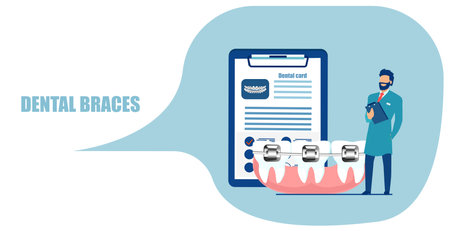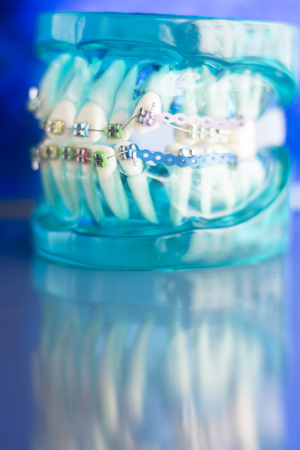1. Understanding Dental Insurance Basics
If you’re new to dental insurance in the United States, you might feel a bit overwhelmed by all the terms and options. Don’t worry—this guide will help you get a clear picture of what dental insurance is, how it works, and why it matters for your oral health.
What Is Dental Insurance?
Dental insurance is a type of health coverage specifically designed to help pay for your dental care. Just like medical insurance, it helps you cover the costs of routine checkups, cleanings, fillings, and sometimes more serious procedures like root canals or crowns. Instead of paying the full price out-of-pocket every time you visit the dentist, dental insurance helps reduce your expenses.
How Does Dental Insurance Work in the U.S.?
Most dental insurance plans in the U.S. operate on a yearly basis. You pay a monthly premium (the amount you pay just to have the coverage), and in return, your plan helps pay for certain dental services. Here’s a simple breakdown:
| Term | What It Means |
|---|---|
| Premium | The monthly fee you pay to keep your insurance active |
| Deductible | The amount you must pay out-of-pocket before insurance starts covering services |
| Copay | A set fee you pay each time you visit the dentist or receive certain treatments |
| Coinsurance | The percentage of costs you share with your insurer after meeting your deductible |
| Annual Maximum | The most your plan will pay for dental care within one year; after that, you pay 100% |
| Network | The group of dentists that have agreed to accept your plan’s payment rates; staying in-network usually saves you money |
Why Is Dental Insurance Important?
Dentists recommend regular checkups and cleanings to prevent bigger problems down the road—like cavities, gum disease, or even tooth loss. Without insurance, even basic visits can add up quickly. Having dental coverage means you’re more likely to get preventive care, catch issues early, and avoid unexpected high costs for emergency treatments.
2. Types of Dental Plans: PPOs, HMOs, and Indemnity
When shopping for dental insurance in the U.S., you’ll likely come across three main types of plans: PPOs, HMOs, and Indemnity plans. Each plan type has its own network rules, costs, and flexibility. Let’s break down what each one means and how to decide which fits your needs best.
PPO (Preferred Provider Organization) Plans
PPO dental plans are very popular because they offer a balance between flexibility and cost savings. With a PPO, you get access to a network of dentists who have agreed to provide services at reduced rates. You can also visit out-of-network dentists, but you’ll pay more out of pocket.
Key Features:
- Large network of participating dentists
- Partial coverage for out-of-network care
- You don’t need a referral to see specialists
- Usually higher monthly premiums than HMOs
HMO (Health Maintenance Organization) Plans
HMO dental plans tend to be more budget-friendly. They require you to choose a primary care dentist from the plan’s network and usually do not cover any out-of-network care except in emergencies. Referrals are needed to see specialists.
Key Features:
- Lower monthly premiums
- Must use dentists in the HMO network
- No coverage for non-emergency out-of-network visits
- Referrals required for specialist visits
- Often little or no deductible
Indemnity (Fee-for-Service) Plans
Indemnity plans give you the most freedom to choose any dentist. The insurance pays a set percentage of your bill for covered services, and you cover the rest. These plans typically have higher premiums and may require you to pay upfront, then file a claim for reimbursement.
Key Features:
- See any dentist you want
- No network restrictions
- You may pay upfront and submit claims for reimbursement
- Higher monthly premiums on average
- You’re responsible for costs above what the insurer pays
Dental Plan Comparison Table
| Plan Type | Dentist Choice | Monthly Premiums | Out-of-Network Coverage | Referrals Needed? |
|---|---|---|---|---|
| PPO | Wide Network/Some Out-of-Network | Moderate to High | Yes (at higher cost) | No |
| HMO | Network Only | Low to Moderate | No (except emergencies) | Yes (for specialists) |
| Indemnity | Any Dentist | High | N/A (all are covered) | No |
Tips for Choosing the Right Dental Plan for You
- If you want freedom to pick any dentist or already have a favorite outside most networks, an Indemnity plan could make sense—just be ready for higher costs.
- If keeping costs down is most important and you’re okay with using network dentists, look at HMO options.
- If you want both some choice of providers and decent out-of-network coverage, a PPO is often a happy medium.
- Think about whether you’ll need specialist care or just basic checkups—this might influence whether referrals are an issue for you.
- Check if your preferred dentist is in the plan’s network before signing up.
- Consider your family’s dental health history; frequent treatments may justify higher premiums for greater flexibility or coverage.
Selecting the right dental insurance isn’t one-size-fits-all. Review your needs, compare plan features side by side, and don’t hesitate to call providers with questions before enrolling.

3. Decoding Networks: In-Network vs. Out-of-Network Dentists
When it comes to dental insurance in the United States, understanding the difference between in-network and out-of-network dentists is key to getting the most value from your plan. Let’s break down what these terms mean and how they affect your wallet and your choices.
What Does “In-Network” Mean?
An in-network dentist has an agreement with your insurance company. This agreement sets specific rates for services—often much lower than what you’d pay without insurance. Insurance plans encourage you to visit these providers by covering a larger portion of the costs.
What About “Out-of-Network” Dentists?
Out-of-network dentists do not have contracts with your insurance provider. You can still see them, but you’ll usually pay more out of pocket. Your plan may cover a smaller percentage of the bill, or sometimes none at all, depending on your policy.
How Does This Affect Costs?
| In-Network Dentist | Out-of-Network Dentist | |
|---|---|---|
| Service Cost (Example: Cleaning) | $100 (negotiated rate) | $150 (usual rate) |
| Insurance Pays | 80% ($80) | 60% ($90 max benefit) |
| Your Cost | $20 | $60 |
Provider Choices: Flexibility vs. Savings
If you want the freedom to choose any dentist—even one who’s out of network—you may pay more for that flexibility. Sticking with in-network providers usually means lower costs and fewer billing surprises. It’s always smart to check if your favorite dentist is in-network before making an appointment.
4. Premiums, Deductibles, and Copays Explained
When choosing dental insurance in the United States, understanding the different types of out-of-pocket costs is key to finding a plan that fits your needs and budget. Lets break down the most common expenses you may encounter: premiums, deductibles, copays, and coinsurance.
Monthly Premiums
Your premium is the amount you pay every month to keep your dental insurance active. Even if you don’t use any dental services, this fee keeps your coverage in place. Premiums can vary based on the type of plan, level of coverage, and even where you live.
Annual Deductibles
The deductible is the amount you pay out of pocket for dental services each year before your insurance starts to share the costs. Not all plans have deductibles, but many do—especially for more comprehensive coverage. For example, if your deductible is $50, you must pay that amount for covered services before your plan begins paying its share.
Copays and Coinsurance
A copay (or copayment) is a fixed dollar amount you pay when you receive certain dental services. For example, a plan might require a $20 copay for a routine cleaning. Coinsurance, on the other hand, is a percentage of the cost of a service that you pay after reaching your deductible—for instance, paying 20% of the bill for a filling while your insurance covers the remaining 80%.
Typical Out-of-Pocket Costs Breakdown
| Cost Type | What It Means | Example Amount |
|---|---|---|
| Premium | Monthly fee for coverage | $25/month |
| Deductible | Amount paid before insurance kicks in | $50/year |
| Copay | Flat fee per service or visit | $20/cleaning |
| Coinsurance | % of costs after deductible is met | 20% for fillings |
How These Costs Affect Your Wallet
The total amount you spend depends on how often you visit the dentist and what kinds of treatments you need. If you mostly go for routine check-ups, youll mainly pay premiums and copays. If you need major work like crowns or root canals, your deductible and coinsurance will become important factors to consider. Always review what’s covered by your plan and check if your dentist is in-network—this can make a big difference in how much you pay out of pocket.
5. Making the Most of Your Dental Benefits
Understanding Your Coverage Limits
Every dental insurance plan comes with coverage limits, often called “annual maximums.” This is the total dollar amount your plan will pay for your dental care in a year. Once you hit that limit, you’re responsible for all additional costs until your benefits reset. Knowing your annual maximum helps you plan bigger treatments and avoid surprise bills.
| Plan Type | Typical Annual Maximum |
|---|---|
| Basic Plan | $1,000 – $1,500 |
| Premium Plan | $1,500 – $2,500+ |
Watch Out for Waiting Periods
Many dental insurance plans include waiting periods for certain services, especially major procedures like crowns or root canals. This means you may need to wait several months after enrolling before your coverage kicks in for these treatments. Always check your policy’s fine print so you can schedule appointments at the right time.
| Treatment Type | Typical Waiting Period |
|---|---|
| Preventive Care (cleanings, exams) | No waiting period |
| Basic Services (fillings, extractions) | 3-6 months |
| Major Services (crowns, bridges) | 6-12 months |
Practical Tips for Maximizing Your Coverage
- Stay In-Network: Choose dentists within your network to get the best rates and full coverage. Out-of-network providers usually cost more out-of-pocket.
- Schedule Regular Checkups: Preventive visits are often covered 100%. Use them to catch issues early and save on costly procedures later.
- Time Major Procedures: If possible, spread expensive treatments over two benefit years to maximize your annual maximum.
- Know What’s Covered: Review your summary of benefits to understand what services are included and which ones have limitations or exclusions.
- Avoid Unnecessary Extras: Some dentists may suggest add-on services not covered by insurance. Ask if a procedure is essential and whether it’s covered before agreeing.
- Track Your Claims: Keep an eye on your claims and remaining benefits through your insurer’s website or app.
Avoiding Common Pitfalls in Dental Plans
- Missing Open Enrollment: Make sure to enroll or update your plan during open enrollment periods, typically in the fall.
- Ignoring Pre-Authorization: Some major procedures require approval from your insurer first. Skipping this step could mean a denied claim.
- Dismissing Coverage Changes: Plans can change annually. Always review updates so you don’t miss out on new benefits or find yourself uncovered for needed services.
- Assuming All Services Are Covered: Cosmetic procedures like teeth whitening are usually not covered by dental insurance plans.


